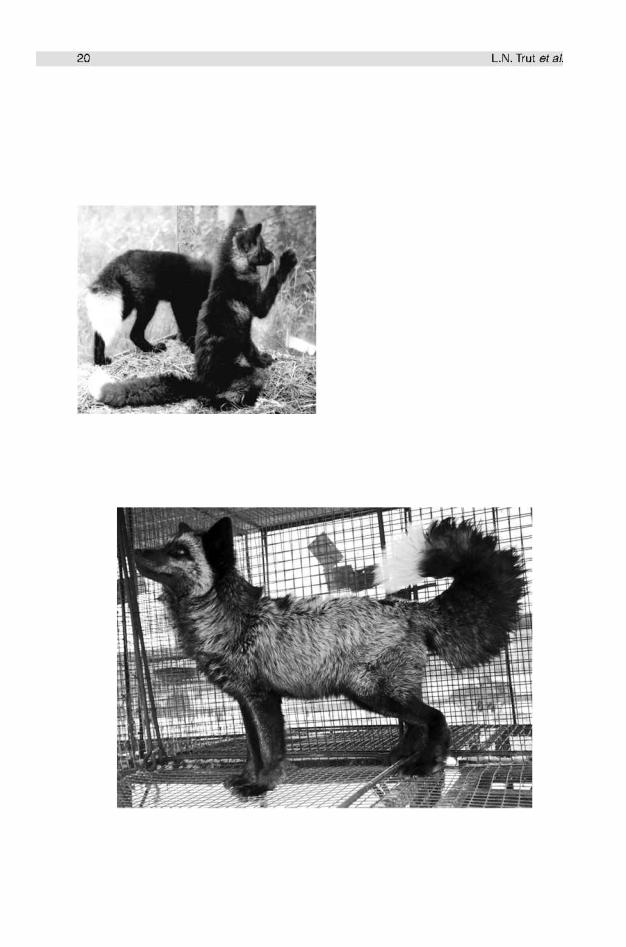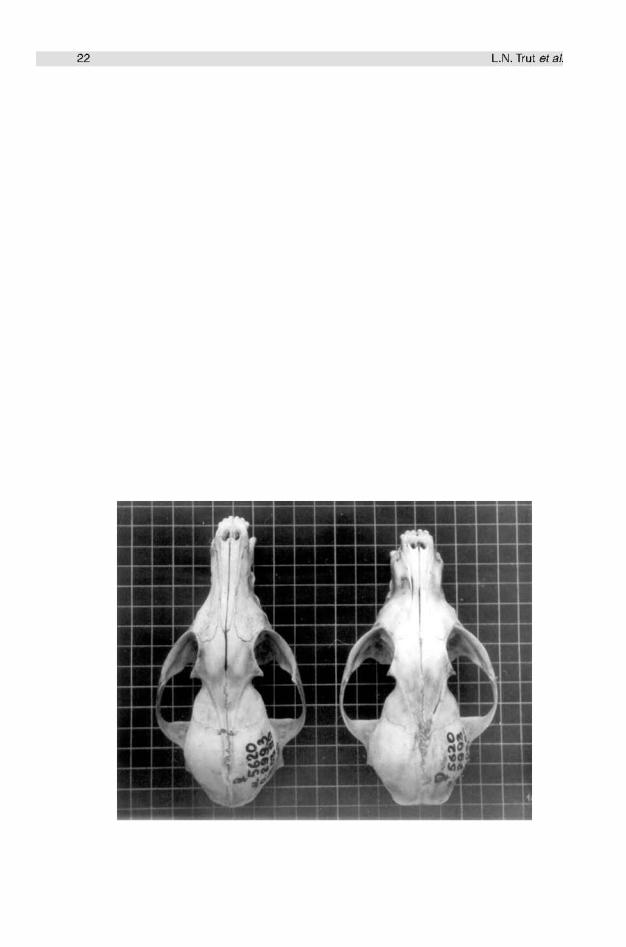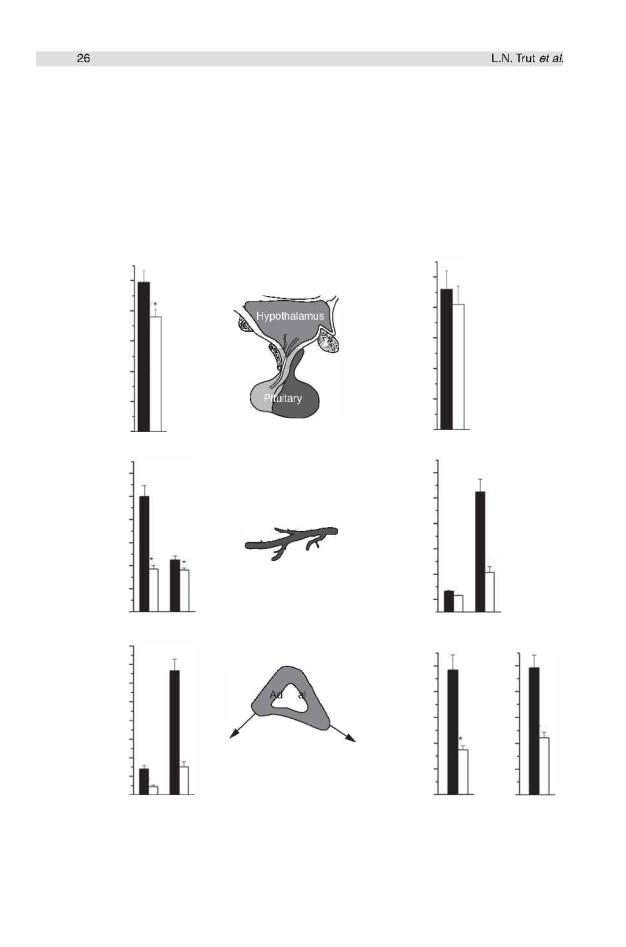
The genetics of dogs
.pdf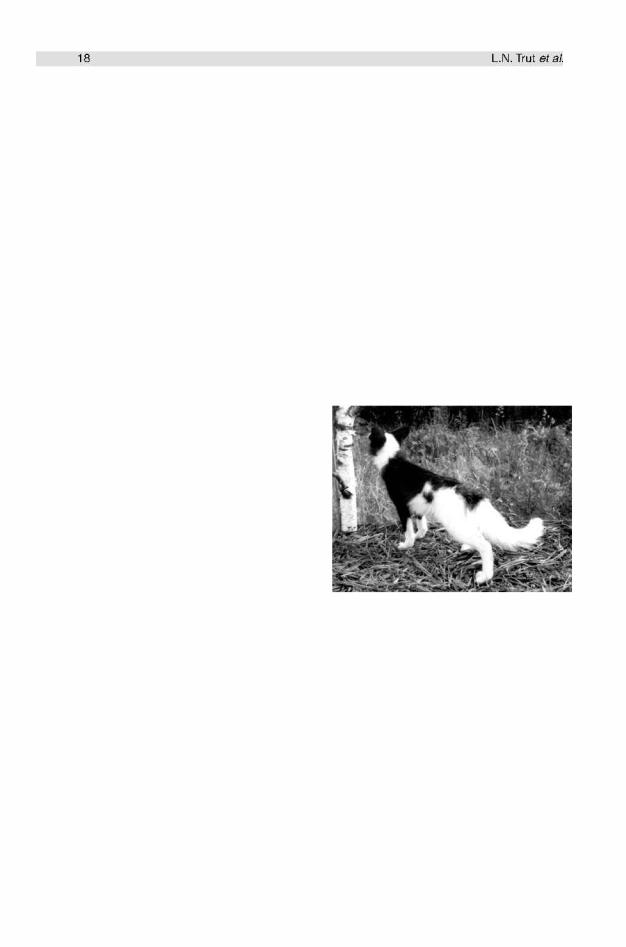
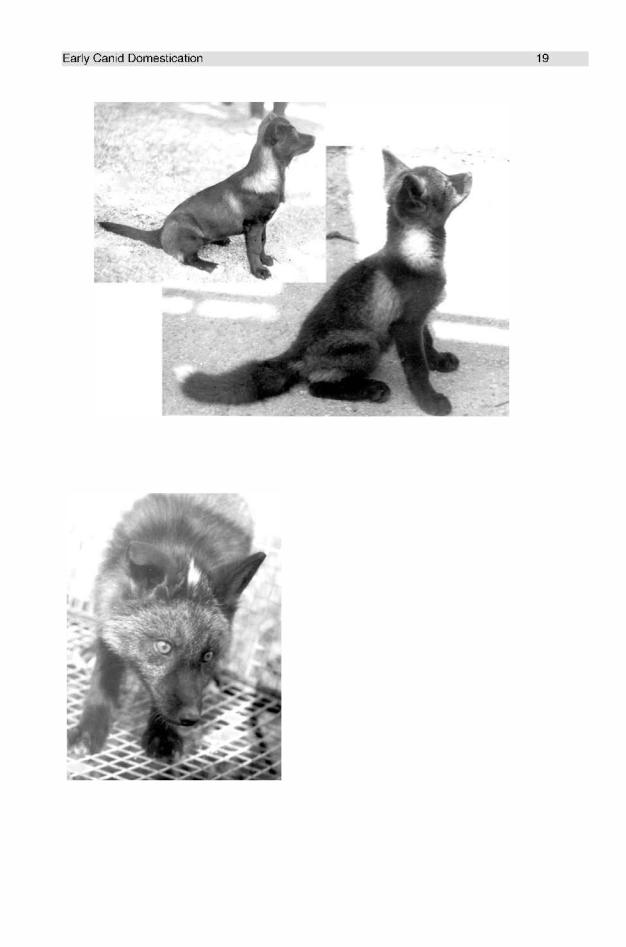
Fig. 2.9. Brown mottling (bm) is located on neck, shoulders, flank and hips. There is a phenotypic similarity between bm in foxes and the colour trait in dogs possibly caused by the allele of the Agouti locus. The bm phenotype is determined by an autosomal recessive mutation.
Fig. 2.10. Floppy ears. Ears remain floppy for the first months of life in some domestic foxes, more rarely through life. This aberrant character does not show clear Mendelian segregation, although it recurs in some lines.
The A protein can act as an antagonist in other hormone-receptor interactions, for example, with adrenocorticotrophic hormone (ACTH). It is also of interest that melanocyte-stimulating hormone (MSH), which is involved in the regulation of melanin synthesis, has a receptor not only in the melanocytes; it has other kinds of receptors, one of which expresses exclusively in brain tissues, and at high concentrations in the hippocampus and the hypothalamus (Tsigas et al., 1995), which are the structures that regulate exploratory and emotional behaviour. With this in mind, it is not at all surprising that selection for behaviour gave rise to primarily correlated changes in coat colour.
In farmed foxes, aberrants with the Star white marking and curly tails were born at an impressively high frequency of 10-1-10-2.
Short-tailed pups and those with floppy ears appeared at a significantly lower frequency
(10-3). Some phenotypic changes, such as a curly tail and piebaldness, started to arise in the farm-bred fox populations several years later. It should be noted that in farm populations bred under human control for about 100 years both
